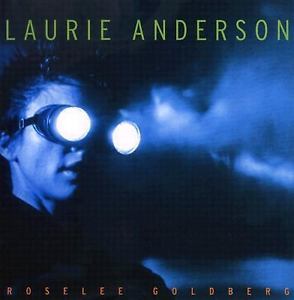Boris Groys (ed.): Russian Cosmism (2018)
Filed under book | Tags: · art, avant-garde, biopolitics, cosmism, cosmos, philosophy, russia, technology

“Cosmism emerged in Russia before the October Revolution and developed through the 1920s and 1930s; like Marxism and the European avant-garde, two other movements that shared this intellectual moment, Russian Cosmism rejected the contemplative for the transformative, aiming to create not merely new art or philosophy but a new world. Cosmism went the furthest in its visions of transformation, calling for the end of death, the resuscitation of the dead, and free movement in cosmic space. This volume collects crucial texts, many available in English for the first time, by the radical biopolitical utopianists of Russian Cosmism.
Cosmism was developed by the Russian philosopher Nikolai Fedorov in the late nineteenth century; he believed that humans had an ethical obligation not only to care for the sick but to cure death using science and technology; outer space was the territory of both immortal life and infinite resources. After the revolution, a new generation pursued Fedorov’s vision. Cosmist ideas inspired visual artists, poets, filmmakers, theater directors, novelists (Tolstoy and Dostoevsky read Fedorov’s writings), architects, and composers, and influenced Soviet politics and technology. In the 1930s, Stalin quashed Cosmism, jailing or executing many members of the movement. Today, when the philosophical imagination has again become entangled with scientific and technological imagination, the works of the Russian Cosmists seem newly relevant.”
With texts by Alexander Bogdanov, Alexander Chizhevsky, Nikolai Fedorov, Boris Groys, Valerian Muravyev, Alexander Svyatogor, Konstantin Tsiolkovsky, Anton Vidokle, and Brian Kuan Wood.
Publisher e-flux, New York, and MIT Press, Cambridge, Massachusetts, 2018
ISBN 9780262037433, 0262037432
ix+249 pages
RoseLee Goldberg: Laurie Anderson (2000)
Filed under book | Tags: · art, art criticism, avant-garde, music, music criticism, musical instruments, performance, performance art, storytelling, technology

“Laurie Anderson is one of the most acclaimed and innovative performance artists and musicians working today. The entire scope of her career is celebrated in this volume, from her early art works and performances in the 1970s, to her rise to prominence in the 1980s with her single O Superman, her portrait of the United States, and her breakthrough album Strange Angels; to her interactive Web site called The Green Room, a CD-ROM titled Puppet Motel, and her production Songs and Stories from Moby Dick, an electronic opera that is based on Herman Melville’s epic novel and includes new inventions, such as the Talking Stick.
With insightful text and more than 300 illustrations, author RoseLee Goldberg, a leading authority on performance art, explores aspects of Anderson’s work of the past three decades, illuminating Anderson’s creative process; her enduring interests in storytelling and in technology; her collaborations with such avant-garde figures as author William Burroughs, monologist Spalding Gray, and rock star Lou Reed; the social and political contexts that have shaped her art; and the critical and popular response it has received. In addition to surveying Anderson’s work chronologically, Goldberg devotes special sections of the book to Anderson’s inventions and body instruments, such as her Headlight Glasses and Screen Dress; her stage sets; her many violins, including the Tape Bow Violin and the Viophonograph; her scores; and her videos. The lyrics to many of Anderson’s songs are included, as are lengthy excerpts from many of her performances, stories, and other writings.”
Publisher Harry N. Abrams, New York, 2000
ISBN 0810935821
204 pages
Review: Eric P. Nash (NYT Books, 2000).
PDF (46 MB, no OCR)
Comment (0)Writing and Unwriting (Media) Art History: Erkki Kurenniemi in 2048 (2015)
Filed under book | Tags: · archive, art, media art, memory, music, technology

“Over the past forty years, Finnish artist and technology pioneer Erkki Kurenniemi (1941-2017) was a composer of electronic music, experimental filmmaker, computer animator, roboticist, inventor, and futurologist. Kurenniemi was a hybrid—a scientist-humanist-artist. Relatively unknown outside Nordic countries until his 2012 Documenta 13 exhibition, ”In 2048,” Kurenniemi may at last be achieving international recognition. This book offers an excavation, a critical mapping, and an elaboration of Kurenniemi’s multiplicities.
The contributors describe Kurenniemi’s enthusiastic, and rather obsessive, recording of everyday life and how this archiving was part of his process; his exploratory artistic practice, with productive failure an inherent part of his method; his relationship to scientific and technological developments in media culture; and his work in electronic and digital music, including his development of automated composition systems and his “video-organ,” DIMI-O. A “Visual Archive,” a section of interviews with the artist, and a selection of his original writings (translated and published for the first time) further document Kurenniemi’s achievements. But the book is not just about one artist in his time; it is about emerging media arts, interfaces, and archival fever in creative practices, read through the lens of Kurenniemi.”
Edited by Joasia Krysa and Jussi Parikka
Foreword by Erkki Huhtamo
Publisher MIT Press, 2015
ISBN 9780262029582, 0262029588
xxviii+340 pages
Reviews: Amanda Egbe (Leonardo, 2016), Alessandro Ludovico (Neural, 2016).
PDF (5 MB)
Comment (0)
